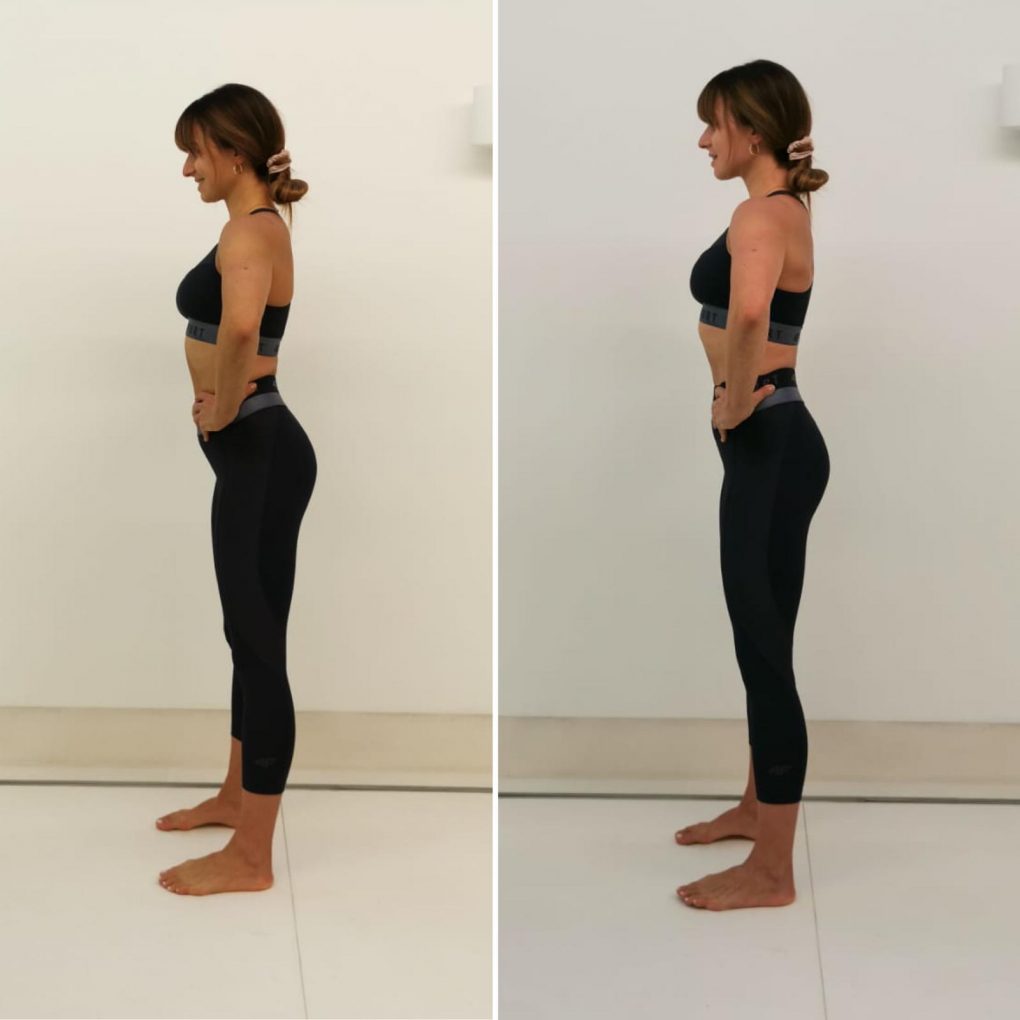
THE ROAD TO HEALTH SERIES: Hyperlordosis
I remember paparazzi taking pics of me and then journalists in the media kept asking questions: “Is Lewandowska pregnant?,” “Lewandowska expecting again?” “What’s wrong with Lewandowska’s belly?” As my great-grandma used to say: The women in our family always used to have prominent buttocks and belly ”. Today, in the series “The Road to Health. Do you know that…?” I would like to raise the issue of a postural defect, namely hyperlordosis. Many of you may have a similar problem. Being unaware of what hyperlordosis is, you can get frustrated because you do sport, follow a healthy diet, and yet your body does not look satisfactory.
Lumbar hyperlordosis
I used to have problems with proper body posture and I am still working on it with a physiotherapist and an osteopath. What’s more, I was pregnant twice which only exacerbated the problem, and believe me (those who know me can tell) I’ve worked really hard to improve it.
Hyperlordosis is a postural defect (also called pelvic anterior tilt) which affects both physically active people and those who lead a sedentary lifestyle.
When the transverse muscle is not strong enough, the normal, natural curves of the spine, lordosis and kyphosis, are disturbed. The stronger the muscles, the less strain on the back. Lordosis itself isn’t a spine defect – it’s actually a natural position. Only when the curve is above average, it is the so-called excessive lordosis, or hyperlordosis which is one of the defects of the spine.
The most common symptoms of hyperlordosis are: a prominent abdomen and an inward curve of the spine.
Other symptoms include:
- relaxed abdominal and buttocks muscles,
- tense muscles and fascia in the area of the lower spine,
- leg muscle contractures (especially the back of the thigh and calf)
- sharp pain in the lumbar region and radiating pain down to the thigh and buttock.
When lordosis is advanced, it can cause muscle spasms, tingling and numbness in the lower limbs, and even disorders of urination and defecation, painful and irregular menstruation, and chronic back and abdominal pain.
What can help?
Your priority should be to strengthen the weakened buttock and abdominal muscles (transverse abdominal muscles), the muscles between the shoulder blades, and to relieve tension and contractures.
It is possible when you work with a specialist. The physiotherapist will show you the right exercises and ensure the appropriate technique of their performance, which is very important. Massages will also be helpful as they allow you to relax tense muscles, relax and calm down.
It is worth adding yoga or Pilates to your daily physical activity plan. Yoga exercises help to increase the flexibility of the spine and maintain the correct, natural curves of the spine. On the other hand, Pilates (combining strength, stretching and conscious breathing exercises) requires the involvement of deep muscles, which contributes to the improvement of body posture and coordination. Swimming will also be a good idea to relieve your tired spine.
Adequate physical activity is crucial. If it’s done on a regular basis, it gives really good results. If you are not sure how to deal with the problem yourself, it is always worth consulting a physiotherapist who is a specialist in this field.









Comments No Comments
Join the discussion…